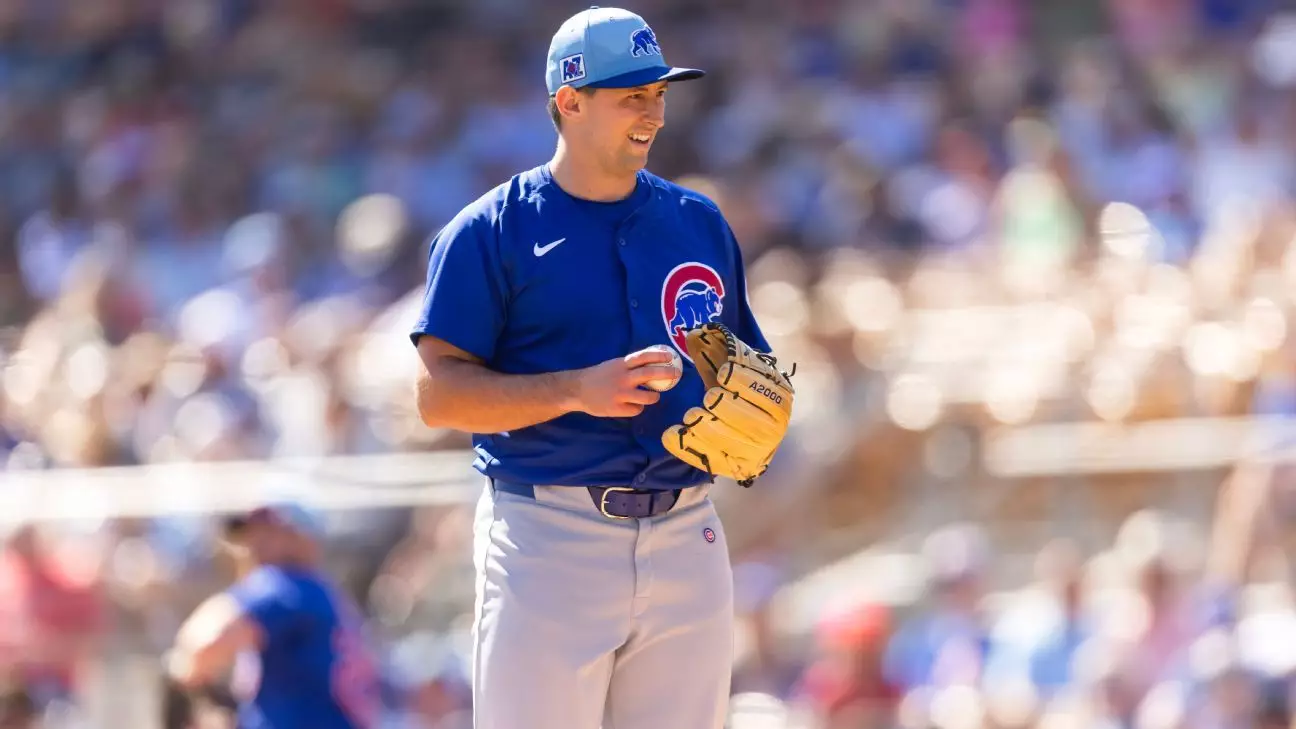In a groundbreaking moment for Major League Baseball (MLB), Chicago Cubs pitcher Cody Poteet made history during a spring training game by being the first player to challenge a ball and strike call. This event took place during the Cubs’ match against the Los Angeles Dodgers and marked a significant evolution in how the game manages umpiring decisions. As the league embraces technology, this moment encapsulates the balance between traditional gameplay and modern advancements in sports officiating.
The occasion arose in the bottom of the first inning when Poteet, recently acquired from the New York Yankees in a winter trade that sent slugger Cody Bellinger to New York, felt confident that a fastball to Dodger infielder Max Muncy was a strike. The home plate umpire, Tony Randazzo, ruled it a ball. This discrepancy inevitably led Poteet to employ the new challenge system. Under the guidelines established for this spring training experiment, Poteet signaled his wish for a review by tapping his head, leading to an instant replay that subsequently overturned the original call. The switch from a 1-1 to 0-2 count ultimately contributed to Muncy’s strikeout, and both players shared a moment of levity following the dramatic review.
This spring training initiative allows teams to challenge two calls per game and maintain the chance to challenge again if successful. Unlike in prior versions of automated officiating, players are the only ones who can initiate a challenge; they do so without external input from dugouts or coaching staff. The catcher’s and pitcher’s experiences and judgment play critical roles. Poteet demonstrated his familiarity with the challenge system by promptly making the request; having spent time in the minor leagues, he had witnessed its workings firsthand.
The responses from players involved indicate a generally positive reception to the idea. Muncy expressed enthusiasm about being part of history, acknowledging that the challenge system would require players to be increasingly discerning when contesting calls. The statistics from the minor leagues, with a 50% overturn ratio and an average of four challenges per game, present a fascinating framework for how the major leagues might evolve this technology.
While the MLB has confirmed this system’s testing only during spring training, there are broader implications at play. Discussion around the potential permanent implementation of this challenge system in regular-season and postseason games continues to swirl among players, coaches, and fans. Muncy posited that for the system to work effectively at the major league level, players must have unwavering confidence in their challenge decisions.
It is essential to acknowledge that the relationship between players, umpires, and emerging technology may define baseball’s ongoing narrative. As the league seeks feedback from players and coaches following spring training, fans are left to ponder how these advancements might reshape America’s pastime. The consensus appears to be that striking a balance between player autonomy and the traditional decisions made by human umpires may offer a fairer playing field.
As seen in the Cubs-Dodgers spring training game, the introduction of a challenge system for ball and strike calls symbolizes a pivotal shift within Major League Baseball. The ability to challenge such calls not only enhances the competitive spirit but also provides a new layer of strategy for players and coaches alike. MLB’s ongoing exploration of this system aims to refine the officiating experience, making every pitch count, while considering the game’s storied tradition. The successful integration of technology in such calls could usher baseball into a new era where precision meets the passion of the sport, reinforcing the idea that every decision—big or small—can make a profound impact on the game’s outcome.

